Categories: Featured Articles » Interesting Facts
Number of views: 4924
Comments on the article: 0
The unusual story of a conventional circuit breaker
The evolution of the protective device: from the time of Edison to the present
The circuit breaker is so familiar to us that it seems that there is nothing interesting in it. But before the switch found its modern look and settled in every home, in offices, schools, shopping centers and enterprises, it went through a long evolution.
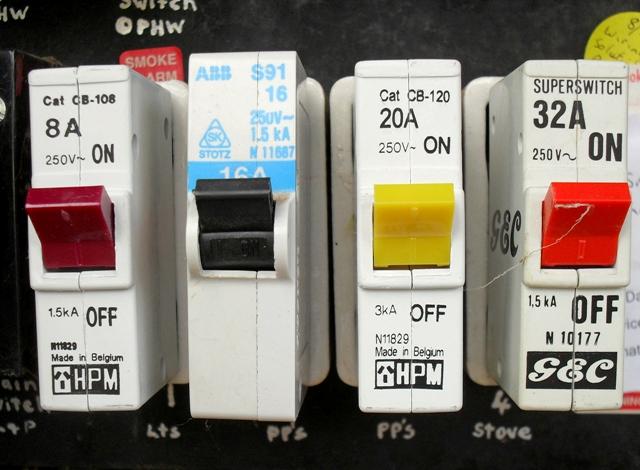
1836-1899
The first line circuit breaker was invented by the American Charles Grafton Page. In 1838, he created a breaker - in fact, a mercury tank with a contact rod. As the current increased, an electromagnetic field appeared, causing the rod to rise from the mercury. The circuit opened, and when the magnetic field disappeared, all the elements returned to their places.
Later prototypes of fuses appeared. Their device was patented by Thomas Edison in 1880: a fusible insert made of foil or wire was placed in a glass flask. Outwardly, the fuse resembled a familiar light bulb, but with seeming primitiveness it provided a network breakdown during overload: the insert burned out - the circuit opened.
At the end of the 19th century, circuit breakers appeared with automatic short circuit protection. It was a device with spring contacts, which were held in place by a latch. Under the influence of an electromagnet, it opened and actuated a breaking spring. This principle has proved so effective that it is still used in industrial circuit breakers.
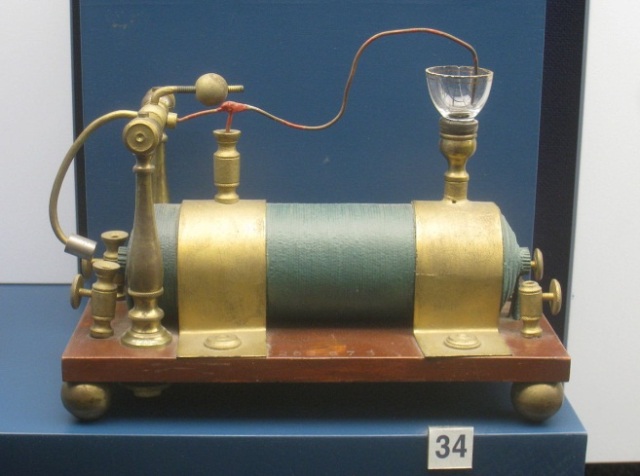
Charles Grafton Page submachine gun
1900–1910
At the beginning of the twentieth century, a real boom of circuit breakers began in Europe. At the World Exhibition in Paris, Electric b. Schukkert in Nuremberg ”introduced a three-phase generator with a new circuit breaker.
The magazine "Electricity" in 1902 reported: "Secondary switching of a circuit breaker after it has fallen out of the circuit is possible only when the cause of the short circuit or other damage has really been eliminated. The device is very sensitive. It always functions at the same current. By means of a special screw, the device can be delivered to any number of amperes up to 2000 ”.
In 1910, a switch with two relays appeared. The device disconnected the network instantly only with large congestion. If the power in the network increased slightly, the switch tripped with an adjustable delay.
In the same period, inventors are thinking about how to solve the problem of the electric arc, which is formed when the contacts open and destroys the elements of the circuit breaker. And Mikhail Dolivo-Dobrovolsky invents an arcing device: a metal grid of insulating material with narrow slots extinguishes an electric arc by crushing it into small parts.
Circuit Breakers at the Beginning of the 20th Century
1911–1920
In 1911, the first oil circuit breaker was presented at an exhibition in Turin. The French demonstrated two options at once: three-phase at 25 kV and single-phase at 45 kV with a capacity of 10 kVA. The inlets, contact and arcing systems in such a switch were placed in a grounded reservoir with oil, which was under pressure. The oil tank served not only to extinguish the arc, but also to isolate live parts.
Simple, reliable and inexpensive, these circuit breakers also had a number of significant drawbacks: they could explode, were fire hazardous and had very impressive dimensions.
In 1914, the same Dolivo-Dobrovolsky invented a deionic grating with special electromagnets for drawing an electric arc into the gap of the arcing chamber. The technology helps to extinguish the arc as efficiently as possible.The principle applied 105 years ago is still used in circuit breakers.
1921–1945
The German engineers Hugo Stotz and Heinrich Schachtner made a revolution: they combined thermal and magnetic trip units into a single reusable unit. As a result, the devices began to protect not only from overloads (as their predecessors did with one thermal release), but also from short circuits. Now the insert did not have to be changed after each operation - it was enough to press a button and restart the switch.
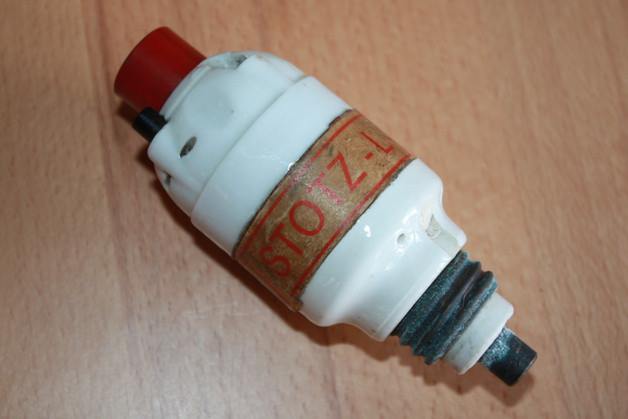
Hugo Stotz circuit breaker
The Germans received a patent for the invention in 1924, and four years later the world's first modular circuit breaker appeared on the market, which was then produced without structural changes for almost 30 years.
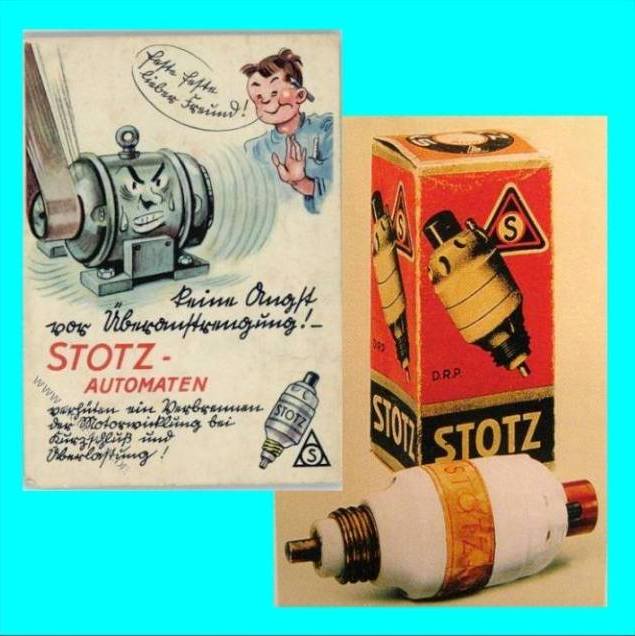
Hugo Stotz circuit breaker advertising in the 20s - 30s of the XX century
In the 1930s, arcing chambers for extinguishing sparks that occur when the device is triggered, and contact pads made of silver-containing materials also appeared.
According to Denis Nikitin, an expert engineer, one of the leading manufacturers and suppliers of electrical and lighting equipment, in our time, pure silver is not used in the manufacture of circuit breakers due to the low melting point and rapid destruction during arc burning.
Modern devices use an alloy of silver with a refractory substance (metallic or non-metallic) to increase the resistance of the contact group. For example, series switches use solders made of silver-containing material, which increases the wear resistance of the contact group and reduces the transition resistance. Accordingly, the service life of the circuit breaker increases, its reliability increases.

Hugo Stotz patent for circuit breaker

Advertising of Stotz switches on postcards
1946–1975
In Russia, the development of technology followed a slightly different path. In the post-war period, AB25 circuit breakers were widely used. The releases in them were only thermal, therefore, these devices reliably protected only from overloads.
Short circuits became a problem: the electrical network must be opened instantly, but the bimetal plate of the thermal release needs time to heat up and operate. The short circuit current circuit breaker with such a release, of course, disconnected, but a fire in the wiring could start earlier.
As for the arcing chambers of the Soviet circuit breakers of the 1950-1960s, they contained a small number of plates. The efficiency of arc extinction in this case is low due to small crushing.
There are much more plates in modern arcing chambers, while engineers are trying to find the optimal balance between the increased number of plates for arcing efficiency and the compactness of circuit breakers.
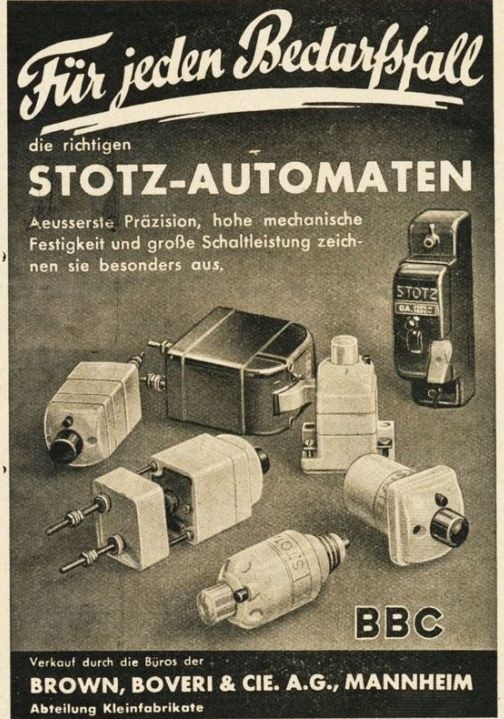
Circuit breakers in the first half of the 20th century
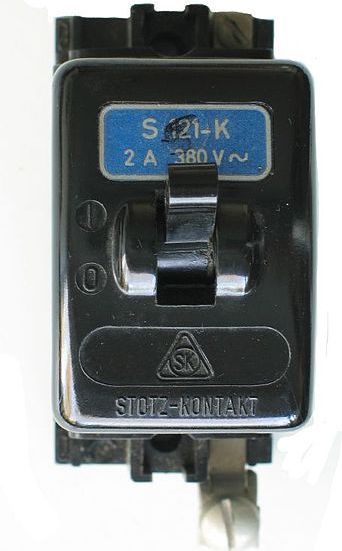
Automatic switch STOTZ-KONTAKT of 1952 of release
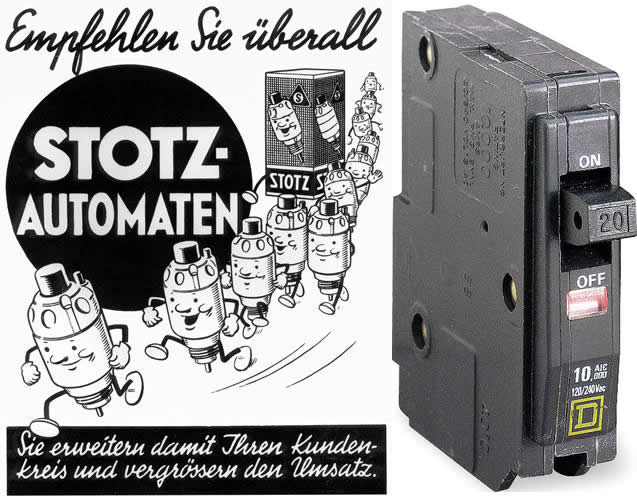
ABB circuit breaker

Advertising circuit breakers in Germany in the 70s of XX century
1976–1991
Over the next 20 years, the vector of development of circuit breakers in the world has shifted towards improving performance, improving arcing and contact systems, the emergence of drives. But in our country, this period was marked by the proliferation of AE1031 switches.
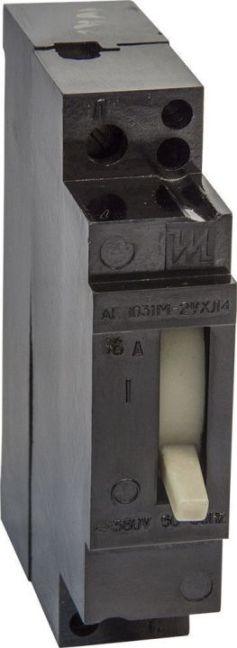
Automatic switch AE1031
Their release was still only thermal, but there was also a fundamental difference - the absence of an arcing chamber.
When the device is triggered, its contacts diverge at a greater distance than the devices of the previous generation, and the arc goes out. Such switches cope with their task and are still found in apartment panels of residential buildings.

AE1031 switch in disassembled form
“It is better to replace such a switch with a modern one equipped with an electromagnetic release and an arcing chamber. Loads increased significantly and short-circuit currents increased, ”explains Denis Nikitin (IEK GROUP). - To ensure the safety of electrical networks, circuit breakers require reliable operation and speed. Modern devices operate with a short circuit almost instantly - in 0.1 seconds. "
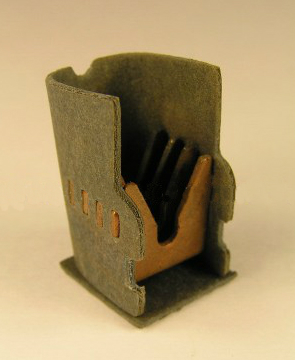
Enlarged arc chamber of the VA47-60 IEK® circuit breaker
From the 1990s these days
In the 1990s Russia has made a tremendous breakthrough in the design and manufacture of circuit breakers, adopting the best practices of foreign companies and introducing its own technologies that meet the demands of the domestic market.
Most modern domestic circuit breakers have both thermal and electromagnetic releases, protect the network at the same time from overloads and short circuits.
For them, manufacturers produce additional modules that expand the functionality of circuit breakers.
For example, trip units are invented that can be controlled remotely. They allow you to open the circuit at a distance and are indispensable during a fire, when you need to turn off the ventilation or open the electromagnetic door lock, but there is no access to the shield.

Modern BA47-60M IEK®
The impulse from the fire protection system is fed to an independent release, and it releases the circuit breaker. An example is screwless mounting with an operating voltage range of 161–253 V, which is used to trip one, two, three or four pole circuit breakers of the BA47-29 and BA47-100 IEK® series.
The mechanical wear resistance of modern circuit breakers is designed for no less than 20,000 cycles, and the electric one for no less than 6000. The leading manufacturers managed to achieve such impressive indicators thanks to the special case design with improved heat dissipation and its additional protection against burning out from behind the arc ( heat is removed through plastic and metal plates).
The evolution of the arcing chambers continues: the number of plates increases in them, double spark-extinguishing grids are installed at the outlet, which increase the fire safety of the apparatus, preventing the discharge of the products of arc burning out.
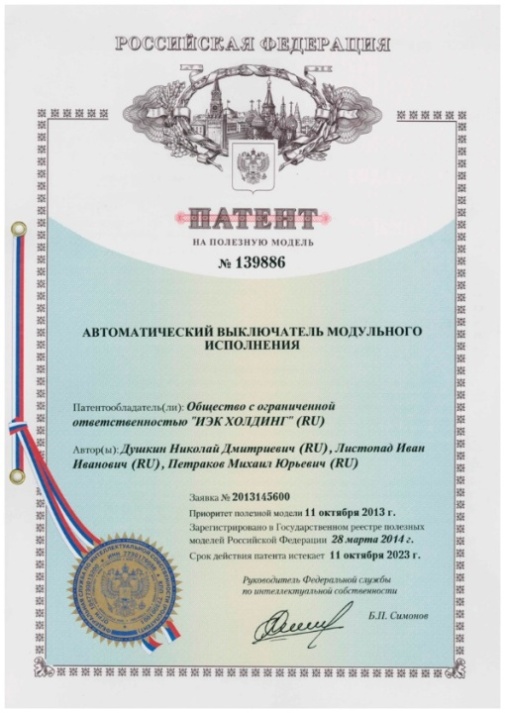
Systems of automatic control of characteristics (depending on working conditions) are increasingly being introduced into modern devices, microprocessors are increasingly being used for arc modeling and the appearance of three-phase machines with a response time of 1 ms. The evolution of the circuit breaker continues.
Material prepared by the press service of IEK GROUP
See also at bgv.electricianexp.com
:

